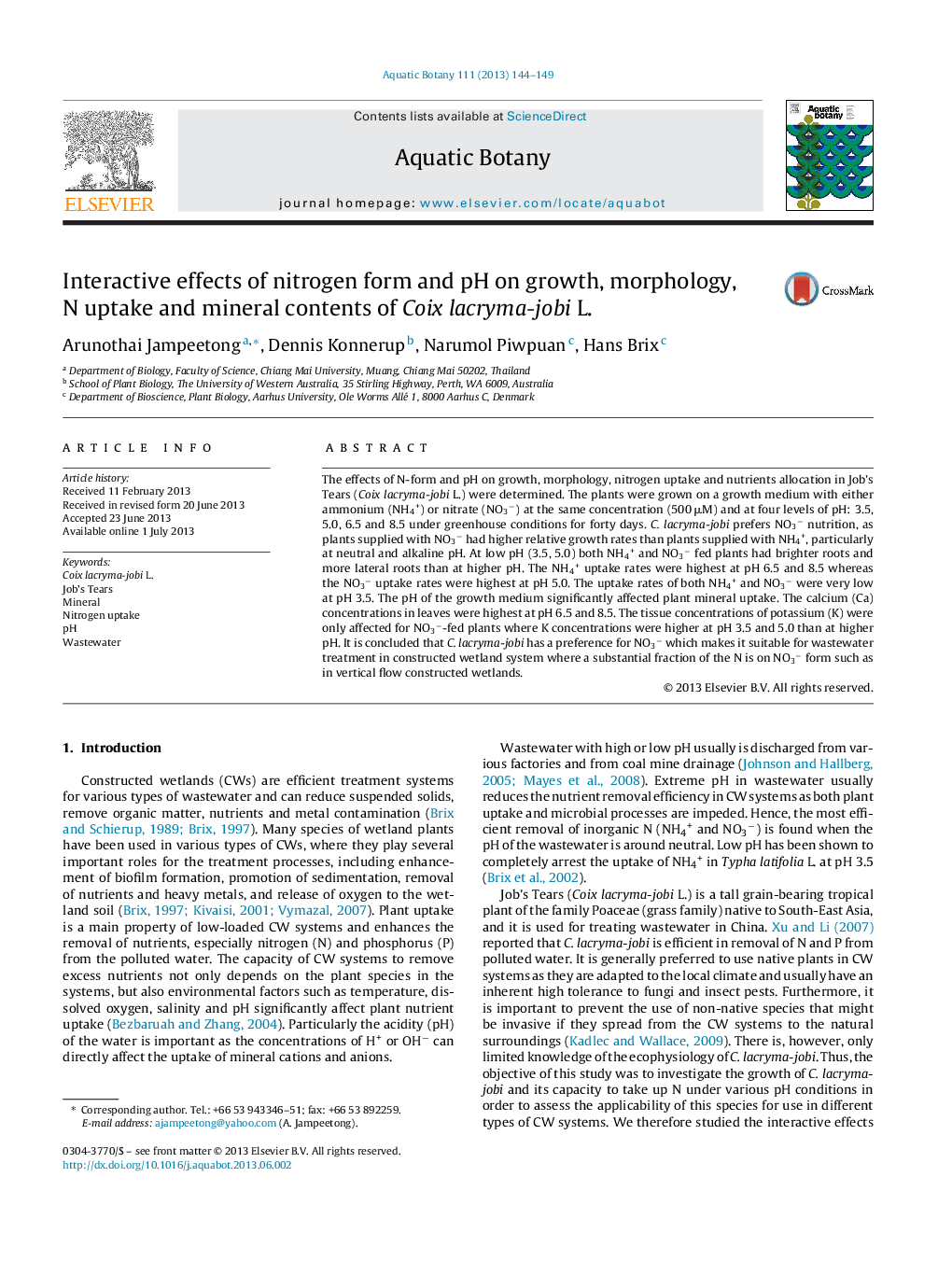| Article ID | Journal | Published Year | Pages | File Type |
|---|---|---|---|---|
| 4527859 | Aquatic Botany | 2013 | 6 Pages |
•C. lachryma-jobi prefer NO3-nutrition with high RGR.•pH barely affected the RGR.•pH 3.5, growth of laterals increased and had long and white roots.•Both NH4+ and NO3− uptake were drastically inhibited at pH 3.5.•pH 5–6.5 are suit for Coix to remove inorganic nitrogen (NH4+, NO3−) from wastewater.
The effects of N-form and pH on growth, morphology, nitrogen uptake and nutrients allocation in Job's Tears (Coix lacryma-jobi L.) were determined. The plants were grown on a growth medium with either ammonium (NH4+) or nitrate (NO3−) at the same concentration (500 μM) and at four levels of pH: 3.5, 5.0, 6.5 and 8.5 under greenhouse conditions for forty days. C. lacryma-jobi prefers NO3− nutrition, as plants supplied with NO3− had higher relative growth rates than plants supplied with NH4+, particularly at neutral and alkaline pH. At low pH (3.5, 5.0) both NH4+ and NO3− fed plants had brighter roots and more lateral roots than at higher pH. The NH4+ uptake rates were highest at pH 6.5 and 8.5 whereas the NO3− uptake rates were highest at pH 5.0. The uptake rates of both NH4+ and NO3− were very low at pH 3.5. The pH of the growth medium significantly affected plant mineral uptake. The calcium (Ca) concentrations in leaves were highest at pH 6.5 and 8.5. The tissue concentrations of potassium (K) were only affected for NO3−-fed plants where K concentrations were higher at pH 3.5 and 5.0 than at higher pH. It is concluded that C. lacryma-jobi has a preference for NO3− which makes it suitable for wastewater treatment in constructed wetland system where a substantial fraction of the N is on NO3− form such as in vertical flow constructed wetlands.
